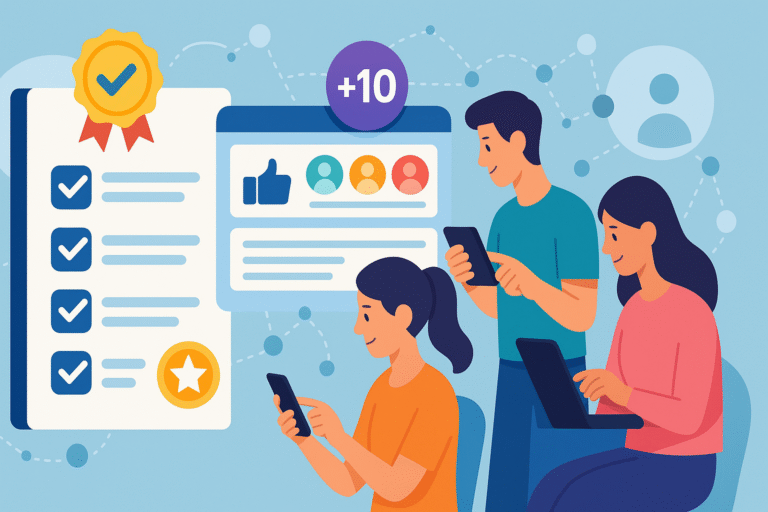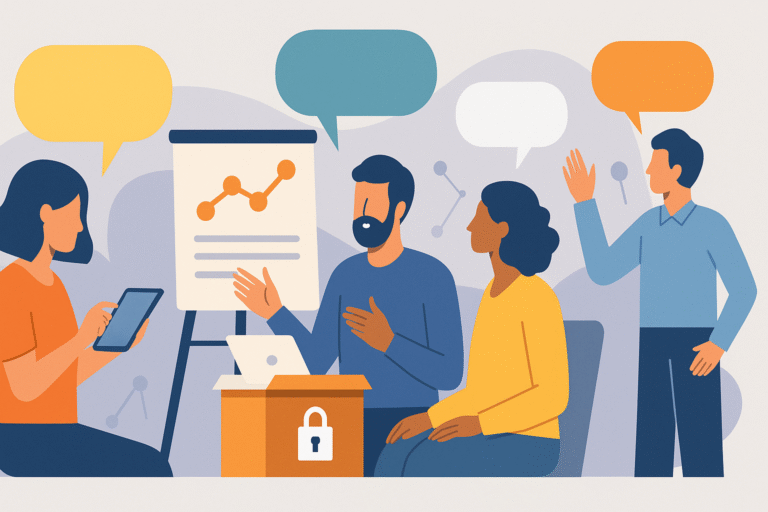
Introduction
Whether it’s a neighborhood meeting, a condominium assembly, or a public consultation, the success of a gathering depends heavily on how it is facilitated. Facilitation is the set of practices, tools, and methodologies that help groups engage in dialogue, make decisions, and achieve shared goals.
With the spread of digital tools, meetings increasingly take place online, alongside or in place of traditional offline formats. It is therefore crucial to know facilitation techniques suitable for both contexts, ensuring inclusion, participation, and productivity.
Why facilitation matters
Without proper facilitation, meetings risk becoming unfocused, dominated by a few voices, or even conflictual. Good facilitation instead:
- ensures everyone has a voice,
- keeps the focus on objectives,
- helps build mutual trust,
- supports transparent and shared decisions.
As highlighted in Mistakes to avoid in online participation, the absence of clear rules and moderation undermines the quality of participation.
Facilitation techniques in offline meetings
In-person meetings benefit from direct communication and body language. Effective techniques include:
1. Dialogue circle
Participants sit in a circle, all at the same distance, with no visible hierarchy. This setup encourages equality and listening.
2. World Café
Small groups discuss specific questions at tables. Participants rotate periodically, sharing insights and connecting perspectives.
3. Open Space Technology
Starting from a central theme, participants propose subtopics. Everyone is free to join the groups they find most relevant, fostering self-organization.
4. Consensus method
Instead of majority voting, the group seeks solutions acceptable to all, reducing conflict and building shared decisions.
Facilitation techniques in online meetings
Online meetings bring specific challenges: physical distance, screen fatigue, and reduced attention spans. Effective strategies include:
1. Clear rules from the start
Define duration, speaking order, and time limits to avoid overlap and confusion.
2. Breakout rooms
Virtual breakout rooms (e.g., on Zoom) allow small group work, similar to the World Café method.
3. Collaborative digital whiteboards
Tools like Miro, Mural, or Jamboard enable real-time idea collection with virtual sticky notes and visual maps.
4. Energizers
Short activities (games, polls, quick questions) help maintain attention during longer sessions.
5. Active chat moderation
A co-facilitator can manage the chat, summarizing key contributions and feeding them into the main discussion.
Hybrid facilitation
Many gatherings now take a hybrid format, with some participants in person and others online. Effective practices include:
- High-quality audio and video (ambient microphones, wide-angle cameras),
- Dual facilitation: one for online and one for in-person participants,
- Shared digital tools (whiteboards, live polls) to put everyone on the same level,
- Synchronized breaks so that remote participants don’t feel excluded.
Digital support tools
Various platforms offer features that support facilitation:
- Mentimeter and Slido for live polls and Q&A,
- Padlet for visual brainstorming,
- Jitsi Meet and Zoom for accessible, recordable meetings,
- Concorder, integrating proposal management, voting, moderation, and transparency in participatory processes.
Concorder can be used before (idea collection), during (sharing proposals and voting), and after meetings (automatic reports and audit trails). This increases traceability and quality of the entire process. Learn more on Concorder.
The qualities of a good facilitator
Beyond tools, it is the facilitator who makes the difference. Key qualities include:
- Neutrality to avoid bias,
- Empathy to understand participants’ needs,
- Synthesis skills to summarize key points,
- Time management to respect schedules,
- Flexibility to adapt to unexpected situations.
Conclusion
Facilitation is an art that blends method, creativity, and listening. Whether online, offline, or hybrid, the right techniques transform simple discussions into valuable participatory processes.
Communities that invest in facilitation build trust, make better decisions, and strengthen their ability to face complex challenges. Technology — including a platform like Concorder — is a valuable ally, but the human quality of the facilitator always makes the difference.


